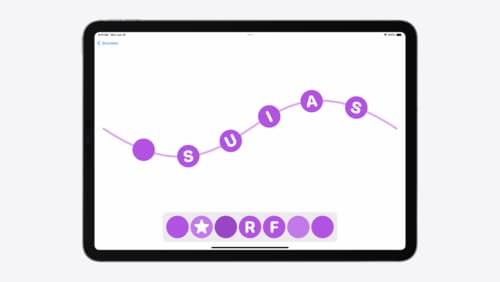mvvm architecture and swiftui
Asked on 2024-09-06
1 search
The MVVM (Model-View-ViewModel) architecture is a popular design pattern used in conjunction with SwiftUI to manage the separation of concerns in an app. SwiftUI's declarative nature aligns well with MVVM, as it allows you to describe the UI in terms of the current state, which is managed by the ViewModel.
In the SwiftUI essentials session, it is highlighted that SwiftUI views are declarative, compositional, and state-driven. This means that views are defined by their state, and SwiftUI automatically updates the UI when the state changes. This is a key aspect of the MVVM pattern, where the ViewModel manages the state and business logic, and the View reflects the state changes.
SwiftUI provides several tools for state management, such as @State, @Binding, and @ObservableObject, which are used to manage and propagate state changes efficiently. For example, @State is used to create an internal source of data for a view, while @Binding creates a two-way reference to the state of another view, allowing for seamless data flow between the View and ViewModel.
The session also discusses how SwiftUI's composition and state-driven updates eliminate boilerplate code and update bugs, making it easier to implement the MVVM architecture effectively.
For more detailed insights, you can refer to the SwiftUI essentials session.

SwiftUI essentials
Join us on a tour of SwiftUI, Apple’s declarative user interface framework. Learn essential concepts for building apps in SwiftUI, like views, state variables, and layout. Discover the breadth of APIs for building fully featured experiences and crafting unique custom components. Whether you’re brand new to SwiftUI or an experienced developer, you’ll learn how to take advantage of what SwiftUI has to offer when building great apps.

Migrate your TVML app to SwiftUI
SwiftUI helps you build great apps on all Apple platforms and is the preferred toolkit for bringing your content into the living room with tvOS 18. Learn how to use SwiftUI to create familiar layouts and controls from TVMLKit, and get tips and best practices.

Enhance your UI animations and transitions
Explore how to adopt the zoom transition in navigation and presentations to increase the sense of continuity in your app, and learn how to animate UIKit views with SwiftUI animations to make it easier to build animations that feel continuous.
